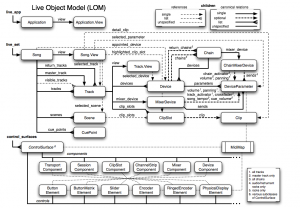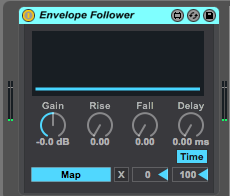Edit Max help files to build M4L devices
An audio pitch transposer made from [gizmo~]
download
https://github.com/tkzic/max-for-live-projects
folder: gizmo
device: gizmo-mod-example.amxd
instructions
- drag gizmo-mod-example.amxd file into an audio track
- use dial to pitch-shift audio
Leap Motion version
If you have access to a leap motion sensor, here is the same device using hand gestures to control the pitch.
device: gizmo-thing-700.amxd
externals and dependencies
Uses the aka.leapmotion external – which needs to be in your Max file path. Download from here: http://akamatsu.org/aka/max/objects/
instructions
- plug in a Leap Motion sensor
- drag gizmo-mod-700.amxd file into an audio track
- Click the toggle to start reading Leap Motion data
- Wave your hands around to pitch-shift audio
general suggestions
for converting Max help files to Max for Live devices:
- Replace UI objects with Live versions. For example, toggle becomes live.toggle
- Replace audio inputs/outputs with plugin~/plugout~
- Select UI objects for presentation mode
- In patch inspector, set the patch to open in presentation mode
- In UI object inspectors, change default Scripting names to allow automation. “Long Name” is the name used by Live for automation






